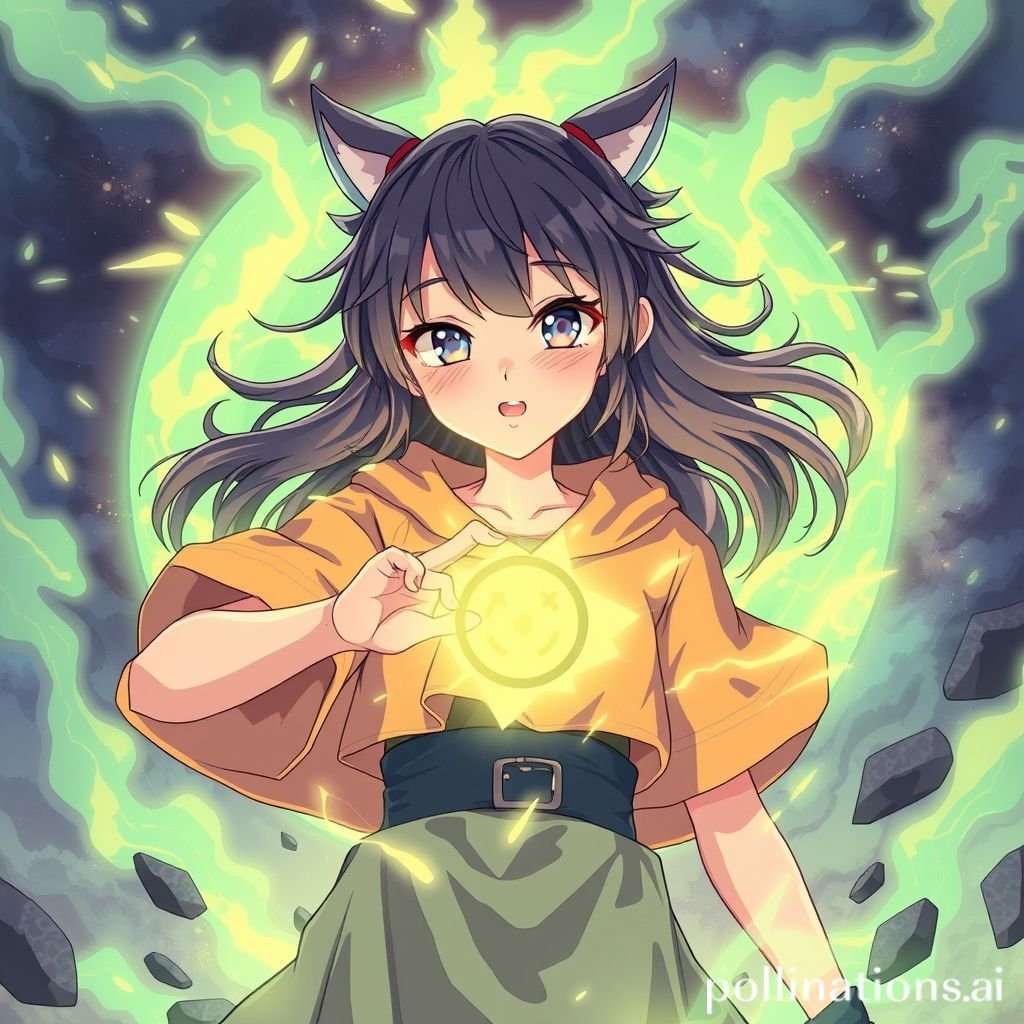Anime Energy Decay: The Art of Residual Sound Design
The Vital Role of Residual Energy Sounds in Anime and Game Sound Design
The sonic landscape of anime is rich with captivating effects, and among the most evocative is the "anime energy decay" sound. This distinct audio effect, often characterized by a fading shimmer or a dissipating hum, serves as a crucial element in conveying the aftermath of powerful actions, spells, or transformations in various media. Practically, these sounds provide vital auditory cues, informing the audience about the lingering presence or gradual disappearance of supernatural energy, magical forces, or advanced technology within the narrative. They don't just fill silence; they define the very air of a scene, adding depth, realism, and emotional resonance to the visual storytelling.
Applications in Media
The "anime energy decay" sound effect is a versatile tool, finding its place across a wide spectrum of media productions, particularly where fantastical or heightened realities are depicted.
Industry-Specific Uses
In the realm of anime and video games, these residual energy sounds are indispensable. For a classic anime series, imagine a powerful hero unleashing a devastating attack; the sound doesn't just cut off with the explosion. Instead, a lingering shimmer or a gentle, drawn-out decay signifies the massive energy expenditure, allowing the audience to truly grasp the scale of the power involved. In game development, these effects provide crucial feedback. After a player casts a spell, a brief shimmer might indicate the spell's residual magic, or a prolonged decay could signify a cooldown period for a powerful ability. This specific anime sound effect is also increasingly used in sci-fi films and animations to depict futuristic technology powering down or leaving residual electromagnetic fields. Sound designers for virtual reality experiences often leverage these nuanced energy decay sounds to enhance immersion, making digital interactions feel more tangible and responsive. The subtle way an anime sound designer can portray the dissipate of an aura or a barrier is key to world-building.
Creative Techniques
Beyond mere notification, "anime energy decay" sounds are employed for sophisticated creative effects. They can establish atmosphere, contributing to the overall mood of a scene. A slow, ethereal decay might evoke a sense of melancholy or mystery, while a sharp, metallic dissipate could imply danger or a rapid power loss. These effects are pivotal in character design, too; a character whose powers leave a persistent, shimmering energy decay sound feels inherently more powerful or mystical. Conversely, a quick, almost abrupt decay might suggest instability or a less refined form of power. The judicious application of these anime audio textures helps define the narrative's pacing, signaling transitions between high-action moments and quiet reflection, ensuring the audience remains engaged with the sonic narrative. For any anime production, the subtle nuances are what make the sound truly exceptional.
Technical Analysis
Understanding the technical characteristics of "anime energy decay" sounds is fundamental for effective sound design and production.
Waveform Characteristics
An "anime energy decay" sound effect typically exhibits a distinct waveform signature. It usually begins with a relatively sharp attack, representing the initial burst or the onset of the energy manifestation. Following this peak, the waveform demonstrates a gradual reduction in amplitude—the decay phase. This decay can be exponential, linear, or even follow a more complex curve, depending on the desired effect. Often, the tail of the waveform will be elongated and irregular, indicating the lingering shimmer or the dissipate of energy. Visualizing this (e.g., using an alt="Anime Energy Decay sound waveform visualization") reveals a tapering shape, contrasting sharply with the sustained amplitude of a continuous drone or the abrupt cutoff of an impact sound. The precise envelope of the decay is crucial for conveying the specific nature of the energy being depicted in an anime or game.
Frequency Profile
The frequency profile of an "anime energy decay" sound is as varied as its waveform. Many such sounds feature prominent high-frequency components, which contribute to the "shimmer" or "sparkle" quality often associated with magical energy or futuristic tech. These frequencies can gently roll off as the sound decays, further emphasizing the dissipate effect. Mid-range frequencies often provide the body or core tone of the energy, while lower frequencies can add weight or a sense of immense power, gradually fading into silence. Careful manipulation of these frequency bands during the decay phase is essential. For instance, a brighter initial shimmer that slowly becomes darker as the high frequencies fade can suggest energy depletion. Conversely, maintaining a certain frequency band longer than others can create a unique lingering resonance. Mastering the frequency decay is a hallmark of professional anime sound design.
Production Tips
Crafting compelling "anime energy decay" sounds requires a blend of creative vision and technical proficiency.
Recording/Editing
While many "anime energy decay" sounds are synthesized, practical sound recording can offer unique textures. Consider recording natural sounds with inherent decay properties, such as resonant metallic objects, glass chimes, or even treated recordings of wind or water. These source sounds can then be heavily processed. When editing, focus on shaping the envelope. Techniques like reverse reverb, extreme time-stretching, and granular synthesis can transform ordinary sounds into otherworldly energy decay effects. Experiment with volume automation to precisely control the fading process, ensuring a smooth and natural dissipate. Layering multiple recordings, each with a different decay characteristic, can add complexity and depth, helping you achieve that perfect anime aura sound.
Software Tools
Modern Digital Audio Workstations (DAWs) like Ableton Live, Logic Pro, FL Studio, and Pro Tools offer an extensive suite of tools for creating "anime energy decay" sounds. Synthesizers, both subtractive and granular, are invaluable for generating the core energy tones and their subsequent decay. Effects such as reverbs (especially convolution and shimmer reverbs), delays, phasers, flangers, and chorus can enhance the sense of lingering energy and create complex textural shifts during the decay process. Pitch-shifting tools can add a falling or rising characteristic to the decay, while spectral processing plugins can isolate and manipulate specific frequency bands, allowing for meticulous control over the shimmer and dissipate effects. Pro Sound Effects also offers a wide range of source material for these types of anime sounds.
Creative Implementation
The true power of "anime energy decay" sounds lies in their strategic and artistic implementation within a sonic mix.
Layering Methods
Effective anime sound design often involves layering multiple sound elements to create a rich, cohesive texture. For an energy decay effect, consider combining a synthetic hum with a natural resonant sound, then adding a subtle shimmer of high-frequency elements. A core energy tone could be overlaid with a unique textural decay layer, such as a reversed cymbal swell or a heavily processed wind chime, to provide a sense of supernatural lingering. By blending these different sonic characters, you can craft a nuanced energy decay that feels both powerful and ethereal, perfectly complementing the visual action in any anime sequence. Careful blending ensures each component contributes to the overall effect without clashing, allowing the energy to gracefully dissipate.
Spatial Effects
Spatialization is key to integrating "anime energy decay" sounds convincingly into a soundscape. Using panning to move the sound across the stereo field can mimic the lingering energy expanding or contracting. Reverb, particularly long and diffused reverbs, can place the decay within a larger acoustic space, suggesting the vastness of the energy or the environment it affects. Delays can create echoes that further emphasize the slow dissipate of the sound, giving the impression that the energy is truly fading away into the distance. Techniques like binaural audio or surround sound can even immerse the listener directly within the vanishing energy field, making the shimmer feel like it's all around them. The thoughtful application of these spatial effects elevates a simple energy decay sound into a vital atmospheric and narrative tool in any anime production. Related anime sounds often leverage these spatial elements.
Sound Pack Integration
Optimizing the use of "anime energy decay" sounds also involves understanding how they fit into broader audio libraries.
Using with Other Sounds
"Anime energy decay" sound effects are designed to complement, not dominate, a sonic mix. They pair exceptionally well with impact sounds (e.g., explosions, punches) to provide a follow-through, or with spell casting sounds to signify the after-effect of magic. For user interface (UI) design in games, a subtle decay can accompany menu transitions or item collection, making digital interactions feel more responsive and magical. When integrated with ambient background sounds, they can subtly alter the atmosphere, adding tension or wonder without being overtly distracting. The key is to blend them seamlessly, ensuring they enhance the primary sound events without masking crucial dialogue or other important audio cues, a common challenge in anime sound design.
Complete Collection
For sound designers and content creators seeking comprehensive audio solutions, acquiring a dedicated sound pack that includes a variety of "anime energy decay" effects is highly recommended. Such collections often provide multiple variations—short decay, long decay, bright shimmer, dark dissipate, and more—offering immense flexibility for different scenarios. These packs ensure consistency in audio quality and often include other complementary anime-inspired sounds, allowing for a cohesive sonic palette across projects. Having a diverse library of these specialized anime sounds allows creators to quickly find the perfect energy decay for any given scene, saving time and fostering creativity. Get the full sound pack for comprehensive audio solutions.
FAQ
Q1: What is an "anime energy decay" sound effect? A1: It's an audio effect that simulates the gradual fading or dissipate of magical, technological, or mystical energy in anime, games, and other media, often characterized by a lingering shimmer or hum.
Q2: Why is the "energy decay" sound important in anime? A2: This anime sound provides crucial auditory feedback, conveying the scale of power, defining atmosphere, and enhancing narrative pacing by signaling the aftermath or lingering presence of supernatural energy within a scene.
Q3: How are "anime energy decay" sounds typically produced? A3: They are often created using synthesizers, heavily processed recordings of natural sounds, and a combination of effects like reverb, delay, pitch-shifting, and spectral processing to achieve the desired decay and shimmer.
Q4: Can these sounds be used outside of anime? A4: Absolutely! While popular in anime, "energy decay" sounds are widely used in video games, science fiction films, UI sound design, and any production needing to convey the fading or dissipate of abstract energy or magical effects.
Q5: What are common characteristics of a good "energy decay" sound? A5: A well-designed "energy decay" sound features a clear initial transient, a controlled and expressive decay phase, and often high-frequency shimmer or resonant qualities that slowly dissipate, contributing to its distinctive anime feel.





